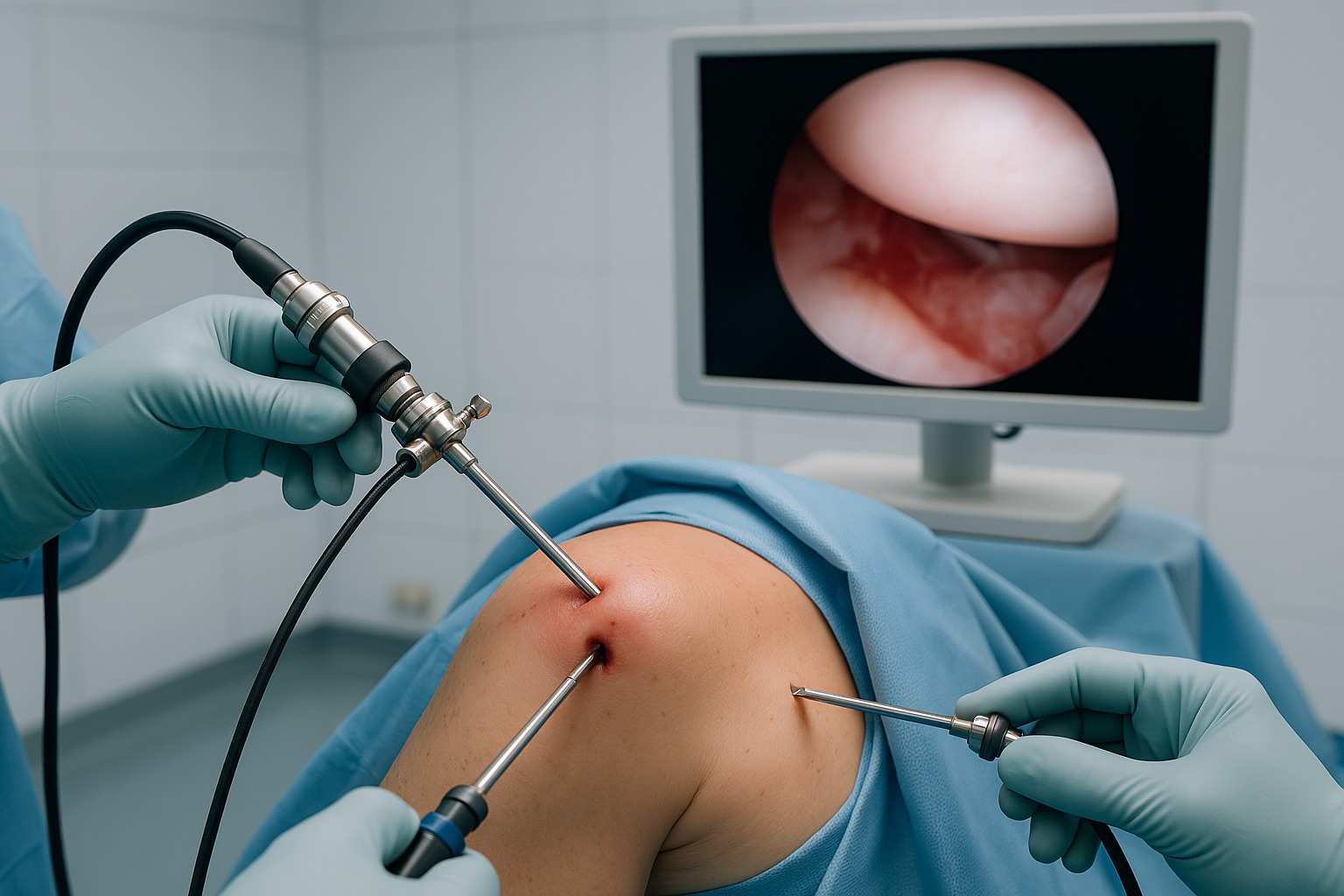Arthroscopic shoulder surgery
About
Arthroscopic shoulder surgery is a surgical procedure performed using an arthroscope, a device that enables surgeons to examine, diagnose, and treat issues within the shoulder joint.

Candidate
Candidates for arthroscopic shoulder surgeries are typically individuals with injuries or conditions such as fractured or strained ligaments, osteoarthritis, or tendon damage. Pain, reduced mobility, and limited shoulder functionality may indicate the need for arthroscopic intervention.
Preparation
Preparation for arthroscopic shoulder surgery involves thorough diagnostics, which may include X-rays, MRI, or other diagnostic tests. The physician will also assess the patient's overall health to ensure they are fit for the procedure.
Treatment
During arthroscopic shoulder surgery, the surgeon uses the arthroscope to visualize the internal structures of the joint and performs procedures such as ligament repair, removal of damaged tissue, or restoration of joint stability. The procedure is conducted through small incisions, often resulting in minimal trauma and faster recovery.
Result
After arthroscopic shoulder surgery, patients often experience reduced pain, improved mobility, and restored functionality of the shoulder joint. Results may vary depending on the type of surgery and the severity of the injury, but most patients notice improvements after recovery.
Precautions
After the operation, it is important to follow the doctor's instructions regarding post-operative care and rehabilitation. This may involve physical therapy, wearing immobilizing braces, and gradually returning to normal activities to avoid worsening the shoulder condition.
Traveling from abroad?
Steps
Test
ZagrebMed patient reviews
F.A.Q.
Shoulder arthroscopy is a minimally invasive surgical procedure that allows orthopedic surgeons to visualize, diagnose, and treat various shoulder joint conditions. It involves the use of a small camera called an arthroscope, which is inserted through small incisions in the shoulder to provide a clear view of the joint's interior on a monitor.
Shoulder arthroscopy can be performed for both diagnostic and therapeutic purposes. It helps in diagnosing conditions such as rotator cuff tears, shoulder impingement, labral tears, shoulder instability, and inflammation. It can also be used to treat these conditions by repairing or trimming damaged tissues, removing loose bodies, or stabilizing the shoulder joint.
The duration of a shoulder arthroscopy procedure can vary depending on the specific condition being treated. On average, it takes approximately 1 to 2 hours. However, the actual time may be longer or shorter based on the complexity of the procedure and any additional treatments required.
Shoulder arthroscopy offers several advantages over traditional open surgery. It involves smaller incisions, resulting in less tissue damage, reduced scarring, and potentially faster recovery times. It also tends to cause less postoperative pain and allows for better visualization of the joint through the arthroscope, enabling more precise treatment.
Recovery time after shoulder arthroscopy varies depending on the specific procedure performed, the extent of the shoulder damage, and individual factors. In general, it may take several weeks to a few months for a full recovery. Physical therapy and rehabilitation exercises are usually recommended to restore shoulder strength, stability, and range of motion.
During the procedure, you will be given anaesthesia to ensure you are comfortable and pain-free. After the surgery, it is normal to experience some pain, swelling, and discomfort in the shoulder area. Our surgeon will prescribe pain medication and provide instructions on how to manage pain effectively during the recovery period.
While many shoulder conditions can be treated with arthroscopy, it may not be suitable for every case. Some complex or severe conditions may require open surgery. The decision on whether arthroscopy is appropriate depends on various factors, including the specific diagnosis, the extent of the damage, and the surgeon's expertise.
Although shoulder arthroscopy is considered safe, there are some potential risks and complications. These can include infection, bleeding, blood clots, damage to surrounding structures, nerve or blood vessel injury, stiffness, and allergic reactions to anaesthesia. Our surgeon will discuss these risks with you before the procedure and take precautions to minimize them.
The timeline for resuming normal activities after shoulder arthroscopy depends on the specific procedure performed and your individual healing process. In general, you may be able to return to light activities within a few weeks, but more strenuous activities and sports may need to be avoided for several months. Our surgeon will provide specific guidelines for your recovery and activity restrictions.
Yes, arthroscopy is generally considered a safe procedure. However, like any surgery, there are potential risks involved. Common risks include infection, bleeding, blood clots, damage to surrounding tissues, and adverse reactions to anaesthesia. Our orthopaedic surgeon will discuss these risks with you before the procedure and take necessary precautions to minimize them. The benefits of arthroscopy, such as smaller incisions, faster recovery, and reduced postoperative pain, often outweigh the risks for many patients.

Send an inquiry for the treatment
Start your way towards a successful treatment today. Fill out the form with your data, choose the service you need and we will connect you with the top medical experts in Zagreb.
